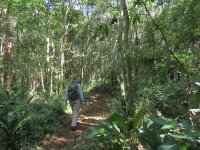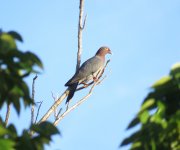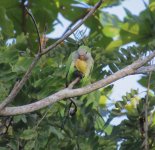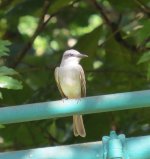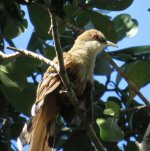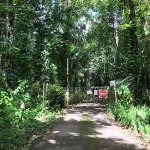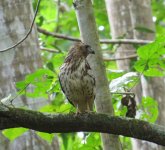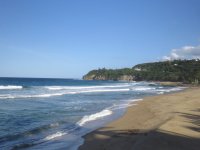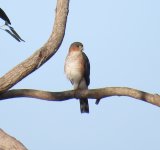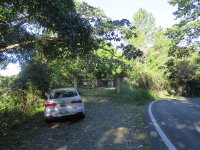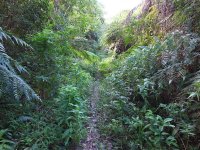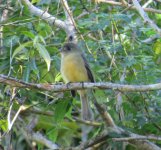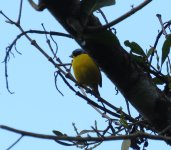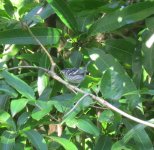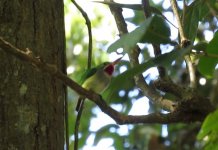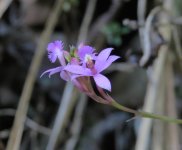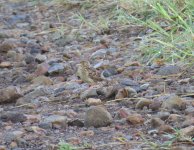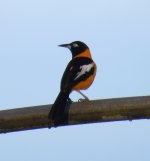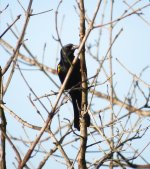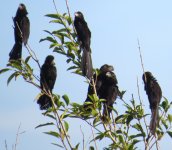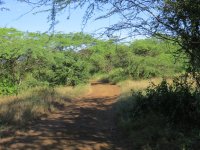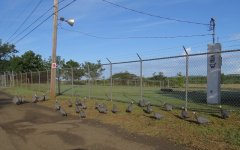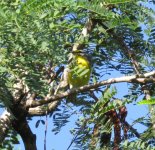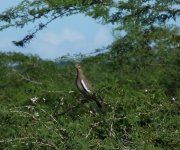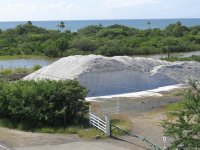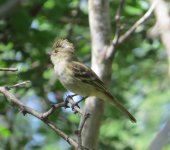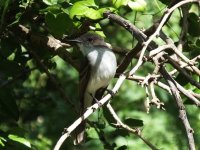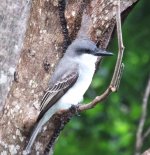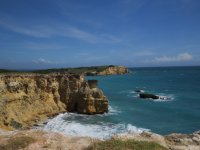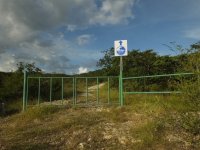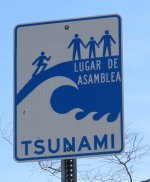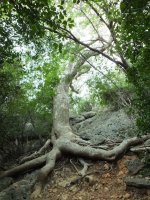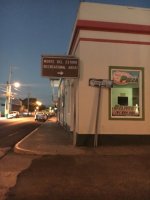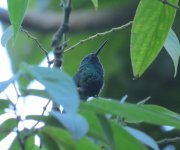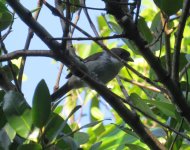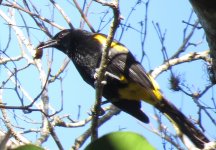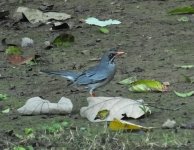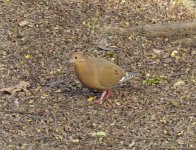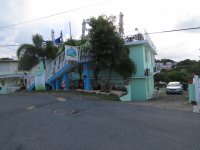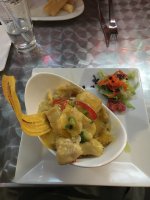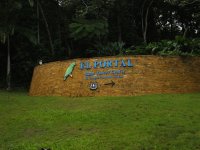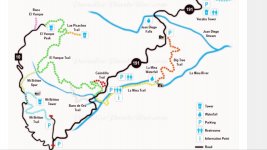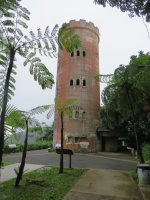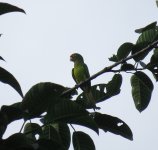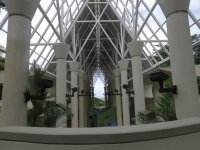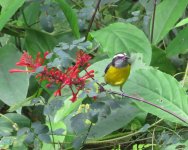Hamhed
Well-known member
“Better late than never” is a regular excuse of mine as a procrastinator of exceptional capabilities. Here I am again then, six months late, working hard to keep my reputation intact. With reports from our visits to Dominica and Arizona to be posted, I hope to return as a regular poster to this forum. Today, my 67th birthday, is a good of a time as any.
Over the December holidays, my wife, Liz, and I flew from Charlotte, NC, to San Juan, Puerto Rico, for a short week of birding. This was our first trip to this particular Caribbean island; our only other visit to this area was a shorter trip to the Bahamas a number of years ago.
As usual, our main source of birding information was eBird and trip reports both from Birdforum (thank you Ross, Peter and Larry) and other internet sources. Though we did not have their birding success, we have set ourselves up needing a return visit. Therein lies the value in failure!
For one identification guide, we took the 2003 version of “Birds of the West Indies” by Raffaele, et al. Used much more often was the bird app by Mark Oberle for Puerto Rican and Virgin Island birds (http://www.puertoricobirds.com/prandvibirdsapp.html). I give this app and it’s many features a very high rating.
We both have 8X binoculars and we also brought our Opticron scope. In hindsight, the scope could have been left behind as we had very little opportunity to use it. For cameras, we are all about convenience so, as usual, I brought my Canon SX50 and Liz her Fujifilm HX50EXR.
We rented a car via the internet from Charlie Car Rental (http://www.charliecars.com), a Kia Forte sedan, which was small but adequate for 99% of our driving. More about that other 1% later. The rental company employee was professional, not pushy about our choices of insurance and the car performed well, though it had a gazelle-like leap from just a touch of the gas pedal. We’d rent from them again (on that return trip we need to make). On main highways, driving conditions and signage were similar to the US.
Finally, all our lodgings were at Airbnb locations. There are many such lodging choices, though choosing the right one is not always so easily done.
12-14 We arrived in late afternoon, picked up our sedan and were soon sitting in bumper to bumper traffic, westbound on San Juan’s Route 22. I soon learned that one needs to be fearless with a touch of aggressive in such traffic if any headway was desired. After a stressful 45 minutes, we broke free of that mess and were soon on the north coast, in Vega Baja, halfway to our first birding destination. We stayed that night in a beachfront house, with the surf and coqui frogs duetting us to sleep. Unfortunately, just a couple of blocks down the dead end road, was a very active marine police station. Apparently a very busy night for whatever it is they do since they put in a full night of traveling at high speeds back and forth past our building. Strike one for our Airbnb choices.
Over the December holidays, my wife, Liz, and I flew from Charlotte, NC, to San Juan, Puerto Rico, for a short week of birding. This was our first trip to this particular Caribbean island; our only other visit to this area was a shorter trip to the Bahamas a number of years ago.
As usual, our main source of birding information was eBird and trip reports both from Birdforum (thank you Ross, Peter and Larry) and other internet sources. Though we did not have their birding success, we have set ourselves up needing a return visit. Therein lies the value in failure!
For one identification guide, we took the 2003 version of “Birds of the West Indies” by Raffaele, et al. Used much more often was the bird app by Mark Oberle for Puerto Rican and Virgin Island birds (http://www.puertoricobirds.com/prandvibirdsapp.html). I give this app and it’s many features a very high rating.
We both have 8X binoculars and we also brought our Opticron scope. In hindsight, the scope could have been left behind as we had very little opportunity to use it. For cameras, we are all about convenience so, as usual, I brought my Canon SX50 and Liz her Fujifilm HX50EXR.
We rented a car via the internet from Charlie Car Rental (http://www.charliecars.com), a Kia Forte sedan, which was small but adequate for 99% of our driving. More about that other 1% later. The rental company employee was professional, not pushy about our choices of insurance and the car performed well, though it had a gazelle-like leap from just a touch of the gas pedal. We’d rent from them again (on that return trip we need to make). On main highways, driving conditions and signage were similar to the US.
Finally, all our lodgings were at Airbnb locations. There are many such lodging choices, though choosing the right one is not always so easily done.
12-14 We arrived in late afternoon, picked up our sedan and were soon sitting in bumper to bumper traffic, westbound on San Juan’s Route 22. I soon learned that one needs to be fearless with a touch of aggressive in such traffic if any headway was desired. After a stressful 45 minutes, we broke free of that mess and were soon on the north coast, in Vega Baja, halfway to our first birding destination. We stayed that night in a beachfront house, with the surf and coqui frogs duetting us to sleep. Unfortunately, just a couple of blocks down the dead end road, was a very active marine police station. Apparently a very busy night for whatever it is they do since they put in a full night of traveling at high speeds back and forth past our building. Strike one for our Airbnb choices.





